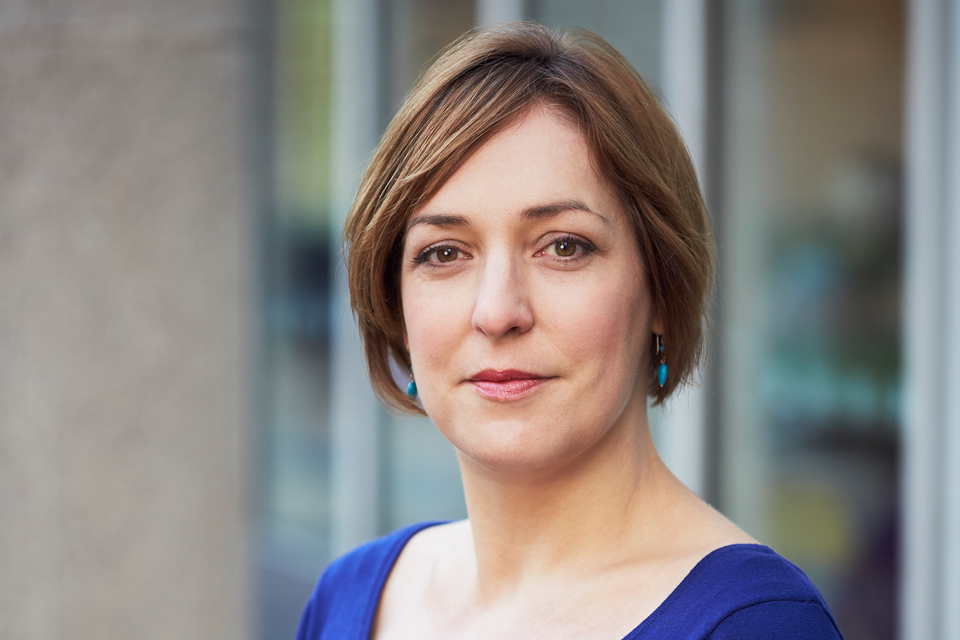The NAO praises our plans for change - but there’s work ahead for us
Sarah Atkinson explains the National Audit Office's findings - and looks to charities to up their game.

A shorter version of this article was published by the Guardian Voluntary Sector Network on 22/01/2015.
The National Audit Office doesn’t do gushing praise. When they report on the findings of their work, they tend to be measured, and are at pains not to be seen to endorse an organisation or a project. They like to keep their powder dry. So when they talk about our “good, early progress” in becoming a more rigorous, proactive and risk-based regulator, we take it as a vote of confidence.
The NAO’s report acknowledges the very significant progress the Charity Commission has made in becoming the robust, proportionate regulator the public and charities expect. We have welcomed the report, and are pleased that the NAO has recognised the ambition and scope of our transformation plans.
The review came as a follow up to a report the NAO published in December 2013, which raised concerns about our effectiveness and rigour. We accepted their recommendations at the time, and acknowledged that there had been weaknesses in our approach to tackling problems in charities. Most charity trustees are honest and willing volunteers, who do their best under difficult circumstances. But the public rightly expects a charity regulator to focus on preventing, identifying and disrupting the few bad apples that would put their charities at risk.
The NAO acknowledges that we have come a long way since then. They have noted, for example, the work we are doing to make wider and more effective use of data to assess risks facing charities and get better at detecting abuse, such as fraud, in individual charities. They have welcomed our business plan, which sees us develop digital systems that mean we can automate lower-risk work and focus resources on high-risk case work. The NAO has also recognised the more frequent and effective use we are making of our regulatory powers during compliance and investigations case work; in 2013-14, we used our powers on over 700 occasions – up from 216 and during the previous year and protected over £31m of charity assets in investigations concluded last year. The report further recognises our programme to deliver the required organisational and cultural change. The NAO has commented positively on the management of the programme, which launched in September 2014 and is still in its early stages.
But we know, and the NAO knows, that this is just the beginning. We have taken the first steps in what will be a long journey to becoming a charity regulator fit for the 21st century, within the confines of the resources at our disposal. We are setting out our vision and have begun to explain how we will pursue that vision. Now we have to deliver the goods. We know that much important work lies ahead. For example, we are coordinating a detailed programme of IT-enabled change. Our transformation is a marathon, not a sprint.
And perhaps the most difficult challenge ahead of us is ensuring we continue to help the majority of good trustees do their best, while focusing more of our resources on the relatively small proportion that put their charity at serious risk.
Many charities are small organisations, run by committed volunteers juggling work and family commitments. We are acutely conscious of this, which is why we continue to look closely at how we can improve the way we present our guidance to trustees. We will need to be creative, and smart and learn do more for less.
This requires buy-in from the charity sector and other stakeholders. However excellent our guidance, we will never again be able to provide the scale of one-to-one support to charities that we did in the past. Charity umbrella bodies and others, including the corporate world, need to consider what more they can do to ensure charities – even the small ones – have access to the legal, governance and financial advice they need at a price they can pay.
We also, in my view, need a culture change in the sector; we need charities to recognise that our role as their regulator is not to champion and defend their interests. Our role is to serve the public by holding charities to account and challenging them to meet the expected standards of governance, probity and accountability. An article by Tim Smedley, published on this website last week, indicates that this point may need repeating. His article criticised our robust approach to regulation, citing a number of charity sector representatives. But I didn’t hear the voice of the donor, the charity beneficiary or the member of the public. Could you imagine a serious discussion about healthcare that failed to reflect the interests or concerns of patients?
Charities may be different to healthcare providers in a thousand ways. But none of them mean that they are above scrutiny. It is precisely because charities are set up to do good that public expectations of them are so high. We at the Commission have learnt about public expectations the hard way. The NAO report today recognises that we are on the road to becoming the regulator the public expects. I hope that charities reflect on the report and consider what part they play in maintaining and increasing public trust and confidence.
Sarah Atkinson is Director of Policy and Communications at the Charity Commission.